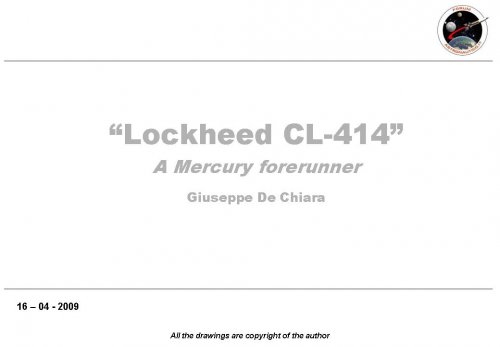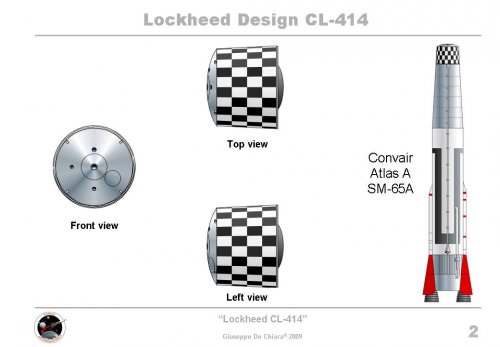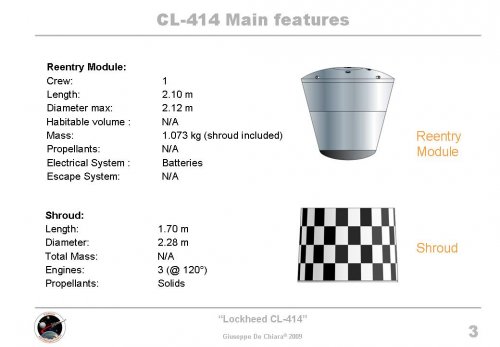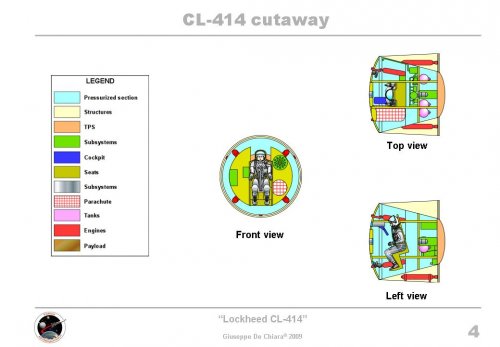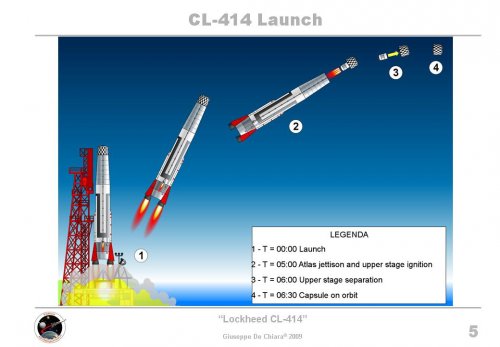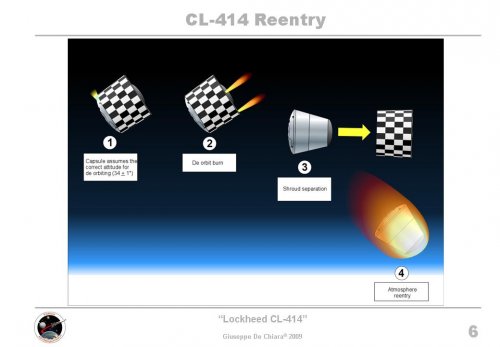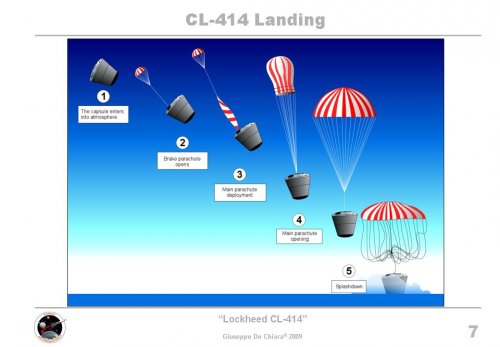archipeppe
ACCESS: Top Secret
- Joined
- 18 October 2007
- Messages
- 2,431
- Reaction score
- 3,152
Dear All,
after the publishing of some previously unseen drawings of the Lockheed CL-414 on Scott Lowther's blog (http://up-ship.com/blog/), I prepared a presentation about the matter.
The Lockheed CL-414 was one of the several configurations taken into account for the USAF project MISS (Man In Space Soonest), and it exploited the reentry configuration realized for the CORONA/Discoverer IMINT satellite.
As we know the MISS project was stopped by Eisenhower's new NASA due to the rising of Mercury programme.
Even if all the work previously done for MISS was turned out to Mercury, Max Faget wanted a "Blunt Body" for its Mercury capsule and the CL-414, even if more advanced, fallen into oblivion.
after the publishing of some previously unseen drawings of the Lockheed CL-414 on Scott Lowther's blog (http://up-ship.com/blog/), I prepared a presentation about the matter.
The Lockheed CL-414 was one of the several configurations taken into account for the USAF project MISS (Man In Space Soonest), and it exploited the reentry configuration realized for the CORONA/Discoverer IMINT satellite.
As we know the MISS project was stopped by Eisenhower's new NASA due to the rising of Mercury programme.
Even if all the work previously done for MISS was turned out to Mercury, Max Faget wanted a "Blunt Body" for its Mercury capsule and the CL-414, even if more advanced, fallen into oblivion.

